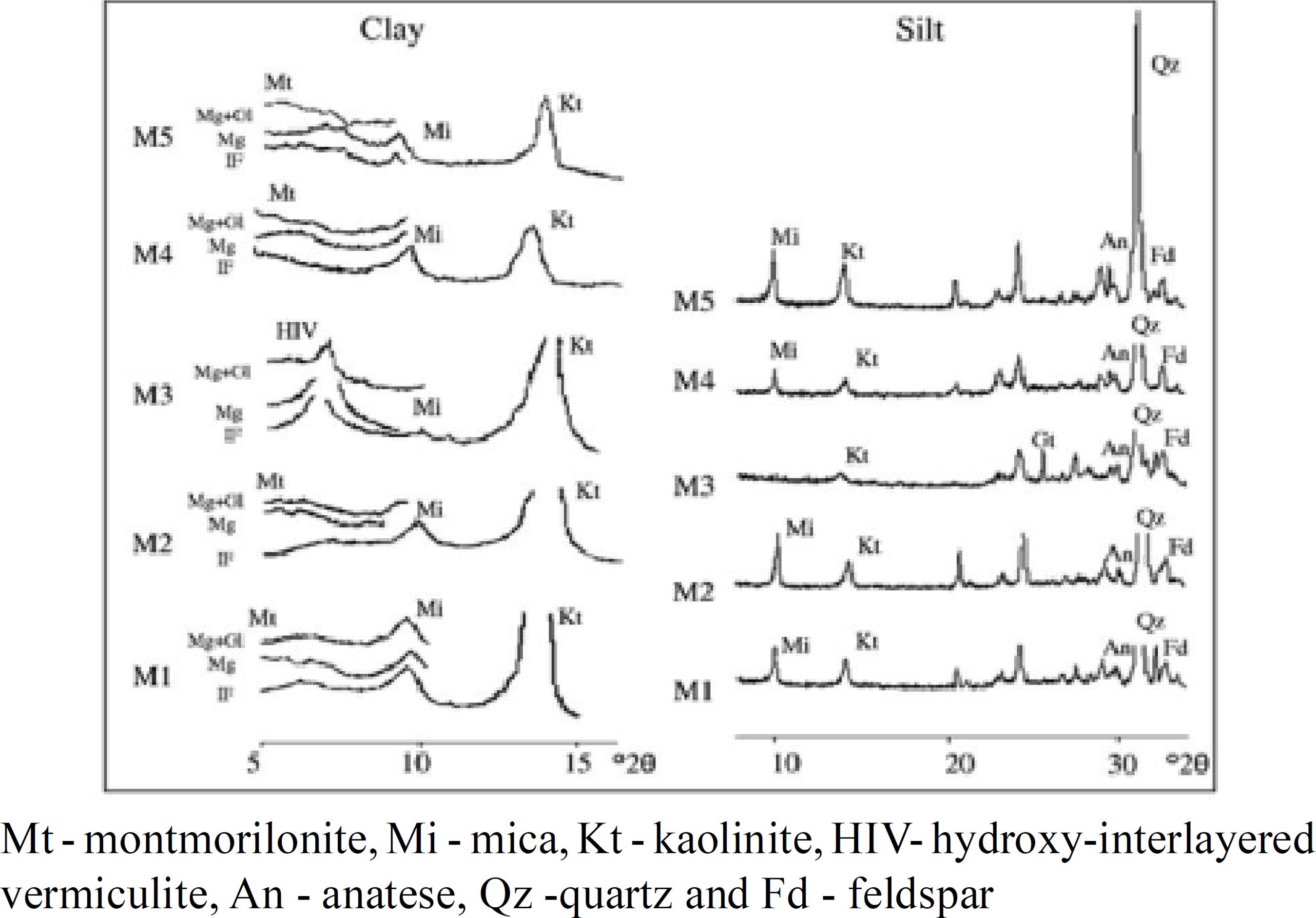ABSTRACT
Despite its importance, studies of mangrove soils are scarce, especially from a pedological perspective. The objective of this work was to study the genesis of soils in a mangrove environment in northeastern Brazil (Ilhéus, Bahia) through a morphological, physical, chemical and mineralogical characterization. All soils presented a sandy texture, which is related to the parent material (Quaternary sand deposits). The tidal flooding and resulting hydromorphic conditions is responsible for dominance of dark grey colors, and high organic matter contents (paludization process). As well as the high values of electrical conductivity (EC) and dominance of Na+ in the saturation extract (salinization and solodization processes, respectively). Contrastingly, the M3 profile, with aninga (Montrichardia linifera) vegetation, a non-exclusive mangrove plant, showed colors with high chromas due to a lesser influence of tidal flooding. The pH values and the SO4=/Cl- ratios indicated the presence of sulfidic material and, thus, the occurrence of the sulfidization process. The soil organic matter fractionation evidenced the humin as the fraction with the highest content, probably because of removal of most soluble fractions due to tidal action. Similar to mangrove soils from southeast Brazil, the XRD analysis identified kaolinite, mica and expandable 2:1 minerals in the clay fraction.
Key words:
Mangrove ecosystem; Sulfidization; Paludization; Salinization; Solodization; Soil organic fractions

 (Source: Google Earth)
(Source: Google Earth)



